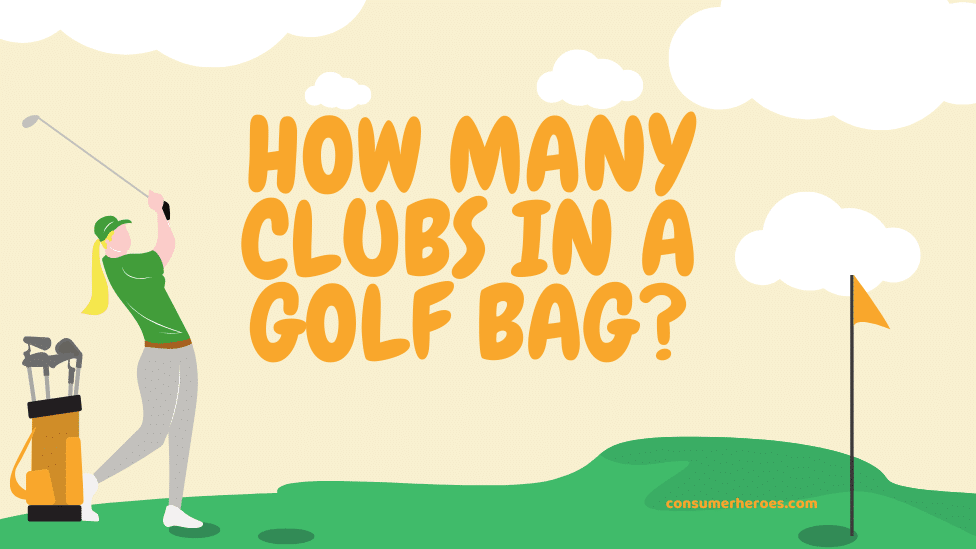Golf is a sport that can be played by anyone, regardless of age or skill level. However, hitting a golf ball can be a daunting task for beginners and even experienced players. To hit a golf ball consistently and accurately, one must understand and master the fundamental techniques of the swing. In this article, we will explore the essential steps on how to hit a golf ball and provide tips to improve your technique.
The first step in hitting a golf ball is to establish proper alignment. Proper alignment ensures that the clubface is square to the target, and the body is aligned correctly. The feet, hips, and shoulders should be parallel to the target line, and the ball should be positioned in the center of the stance. Once the alignment is established, the golfer can focus on the swing technique.
The second step is to grip the club correctly. The grip is the only connection between the golfer and the club, and it is essential to have a proper grip to hit the ball consistently. The grip should be firm but not too tight, and the hands should be placed on the club in a neutral position. The golfer should also ensure that the grip pressure is consistent throughout the swing. By following these two fundamental steps, the golfer can start to develop a consistent and accurate swing.
Understanding the Golf Swing Basics
To hit a golf ball effectively, one must understand the basics of the golf swing. The golf swing is a complex motion that requires coordination and technique. The following paragraphs will explain the key components of the golf swing.
Grip
The grip is the foundation of the golf swing. It is important to have a proper grip to ensure that the clubface is square at impact. A golfer should grip the club with the fingers, not the palms, and the grip pressure should be firm but not too tight. There are three common types of grips: the overlapping grip, the interlocking grip, and the ten-finger grip.
Stance
The stance is the position a golfer takes before hitting the ball. The feet should be shoulder-width apart, and the ball should be positioned in the center of the stance. The weight should be evenly distributed on both feet, and the knees should be slightly flexed.
Backswing
The backswing is the first part of the golf swing. It is important to maintain a smooth and consistent motion during the backswing. The club should be taken back slowly and steadily, with the arms and shoulders working together. The left arm should remain straight, and the wrists should be firm.
Downswing
The downswing is the second part of the golf swing. It is important to maintain a smooth and consistent motion during the downswing. The club should be brought down to the ball in a controlled manner, with the hips and shoulders working together. The left arm should remain straight, and the wrists should be firm.
Follow-through
The follow-through is the final part of the golf swing. It is important to maintain a smooth and consistent motion during the follow-through. The club should be brought all the way through to the finish position, with the weight shifting to the front foot. The left arm should be straight, and the hips should be fully rotated.
Choosing the Right Golf Club
Choosing the right golf club is crucial for hitting a good shot. The club you select should be based on the distance you need to hit the ball, the type of shot you want to play, and the conditions of the course. Here are some tips on how to choose the right golf club:
Consider the Distance
The first thing to consider when choosing a golf club is the distance you need to hit the ball. Each club is designed to hit the ball a certain distance, so you need to choose the right one for the shot you want to play. Here is a general guide to the distance each club can hit:
- Driver: 200-300 yards
- Fairway woods: 150-250 yards
- Irons: 100-200 yards
- Wedges: 50-100 yards
Consider the Type of Shot
The second thing to consider is the type of shot you want to play. Different clubs are designed for different types of shots. For example, if you need to hit the ball high in the air, you should use a lofted club like a wedge. If you need to hit the ball low and far, you should use a lower lofted club like a driver or a long iron.
Consider the Course Conditions
The third thing to consider is the conditions of the course. If the course is wet or the grass is long, you may need to use a club with a higher loft to get the ball in the air. If the course is dry or the grass is short, you may need to use a club with a lower loft to keep the ball from bouncing too much.
In conclusion, choosing the right golf club is essential for hitting a good shot. By considering the distance, type of shot, and course conditions, you can select the right club for the job.
Grip, Stance, and Posture
Mastering the Grip
The grip is one of the most important aspects of hitting a golf ball. A proper grip will help you achieve a consistent swing and hit the ball with accuracy and power. The grip should be firm but not too tight, with the club held mainly in the fingers rather than the palms.
To achieve the perfect grip, start by placing the club in your left hand (for right-handed golfers) and grip it with your fingers. The club should rest diagonally across the fingers, with the thumb pointing down the shaft. Next, place your right hand on the club, with the pinky finger overlapping the left thumb. The right thumb should rest just to the left of the shaft, creating a V-shape between the thumb and index finger.
Perfecting the Stance
The stance is another crucial element of hitting a golf ball. A proper stance will help you maintain balance and generate power in your swing. The feet should be shoulder-width apart, with the weight evenly distributed between them. The knees should be slightly bent, and the back should be straight.
To achieve the perfect stance, start by positioning the ball in the center of your stance. Next, place your feet shoulder-width apart, with the toes pointing slightly outward. Bend your knees slightly and tilt your hips forward. Finally, make sure your back is straight and your shoulders are level.
Achieving the Right Posture
Posture is the final piece of the puzzle when it comes to hitting a golf ball. Good posture will help you maintain balance and generate power in your swing. The key is to keep your spine straight and your weight centered over your feet.
To achieve the right posture, start by standing up straight with your feet shoulder-width apart. Next, tilt your hips forward and bend your knees slightly. Finally, make sure your back is straight and your shoulders are level. Keep your head up and your eyes focused on the ball.
By mastering the grip, perfecting the stance, and achieving the right posture, you’ll be well on your way to hitting the ball with accuracy and power. Remember to practice these fundamentals regularly to develop a consistent swing and improve your overall game.
Executing the Golf Swing
Executing the golf swing is the most important aspect of playing golf. It involves a series of movements that require precision, timing, and coordination. In this section, we will break down the golf swing into three sub-sections: the backswing, downswing, and follow-through.
Backswing
The backswing is the first part of the golf swing. It is the movement where the golfer brings the club back behind their body. The backswing is important because it sets the stage for the rest of the swing.
During the backswing, the golfer should:
- Keep their left arm straight (for right-handed golfers) and their right elbow close to their body
- Rotate their shoulders and hips to create torque
- Shift their weight to their right foot
Downswing
The downswing is the second part of the golf swing. It is the movement where the golfer brings the club down towards the ball. The downswing is important because it determines the power and accuracy of the shot.
During the downswing, the golfer should:
- Start the downswing with their hips, not their arms
- Keep their left arm straight (for right-handed golfers) and their right elbow close to their body
- Rotate their hips towards the target
- Shift their weight to their left foot
Follow Through
The follow-through is the final part of the golf swing. It is the movement where the golfer completes their swing and finishes in a balanced position. The follow-through is important because it helps the golfer maintain their balance and control after the shot.
During the follow-through, the golfer should:
- Continue the rotation of their hips and shoulders towards the target
- Keep their eyes on the ball until the club has finished its follow-through
- Finish in a balanced position with their weight on their left foot (for right-handed golfers)
Overall, executing the golf swing requires practice, patience, and attention to detail. By mastering the backswing, downswing, and follow-through, golfers can improve their power, accuracy, and consistency on the course.
Practicing Drills and Techniques
Drills for Better Swings
To improve their swings, golfers can practice the following drills:
- Alignment Drill: Place two golf clubs on the ground parallel to the target line, one at the feet and one at the ball. This will help golfers ensure their feet, hips, and shoulders are aligned correctly.
- Swing Plane Drill: Use a golf club to draw a line in the air that follows the path of the club during the swing. This will help golfers visualize their swing plane and make adjustments as needed.
- Impact Drill: Practice hitting balls with a towel or headcover placed between the clubface and the ball. This will help golfers focus on hitting the ball squarely and making solid contact.
Techniques for Increased Distance
To increase their distance off the tee, golfers can try the following techniques:
- Proper Tee Height: Tee the ball high enough so that the center of the ball is level with the top of the driver. This will help golfers hit the ball on the upswing and increase their launch angle.
- Full Shoulder Turn: Make a full shoulder turn during the backswing to maximize the potential energy stored in the swing. This will help golfers generate more clubhead speed and increase their distance.
- Weight Transfer: Shift weight to the back foot during the backswing and then to the front foot during the downswing. This will help golfers generate more power and increase their distance.
By practicing these drills and techniques, golfers can improve their swings and increase their distance off the tee.
Common Mistakes and How to Avoid Them
Golf is a game of precision and patience, and hitting the ball correctly is essential for success. Unfortunately, many beginners make common mistakes that can hinder their progress. Here are some of the most common mistakes and how to avoid them:
1. Improper Stance
One of the most common mistakes beginners make is not having the correct stance. A proper stance is the foundation for a good swing. It is important to have a balanced and stable stance with your feet shoulder-width apart, knees slightly bent, and weight evenly distributed between both feet.
2. Poor Grip
Another common mistake is having a poor grip on the club. A proper grip is essential for a good swing and can greatly affect the direction and distance of the ball. The grip should be firm but not too tight, with the club held primarily in the fingers rather than the palms.
3. Incorrect Swing Path
Many beginners have an incorrect swing path, which can cause the ball to go off course. The swing path should be straight back and through, with the clubface square to the ball at impact. It is important to keep the club on the correct swing plane and avoid swinging too far inside or outside.
4. Lack of Follow-Through
A common mistake is not following through with the swing. A proper follow-through allows for maximum power and accuracy. The club should continue to swing through the ball and finish high, with the body facing the target.
By avoiding these common mistakes and practicing proper technique, beginners can improve their golf game and enjoy the sport to its fullest.
Conclusion
In conclusion, hitting a golf ball is a skill that requires practice and patience. By following the tips and techniques outlined in this article, golfers can improve their swing and increase their chances of hitting the ball accurately and with power.
It’s important to remember that there is no one-size-fits-all approach to hitting a golf ball. Golfers should experiment with different techniques and find what works best for their individual swing.
Some key takeaways from this article include:
- Proper grip and stance are essential for a successful swing.
- Keeping the head still and maintaining balance throughout the swing can improve accuracy.
- Practicing with different clubs and on different terrains can help golfers adapt to different situations on the course.
Overall, hitting a golf ball is a complex skill that requires a combination of physical and mental abilities. By staying focused and committed to improving their technique, golfers can achieve success on the course.







